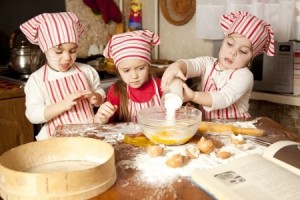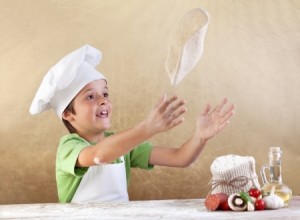 Are you prepared for the challenge of lesson three in cooking for kids? Cookies provide a great way to get your children comfortable with measuring, mixing, and combining ingredients in the right order. However, you should probably prepare to deal with a very messy kitchen at the completion.
Are you prepared for the challenge of lesson three in cooking for kids? Cookies provide a great way to get your children comfortable with measuring, mixing, and combining ingredients in the right order. However, you should probably prepare to deal with a very messy kitchen at the completion.
One approach that will help minimize the mess and confusion is a common chef approach – creating a Mise en place – which involves pre-measuring and preparing all of the ingredients. Using small bowls or cups, have your children measure every ingredient and line them up in order. In the case of cookies where the dry ingredients need to be mixed together then added to the mix of wet ingredients, you can sort the smaller containers into wet and dry sections so that it is easier to follow the directions to make the cookie dough.
For a first batch of homemade cookies, choose a simple drop cookie recipe and one that can take a beating such as oatmeal cookies. You may want to use parchment paper under the ingredients during the measuring and assembly process to limit the waste. Parchment paper also keeps cookies from sticking to a cookie sheet and makes clean-up afterwards much easier.
If you’re introducing more than one child to baking, you may want to have each child take turns with measuring and mixing. Think about making cookies that involve simple stirring rather than beating. You may want to assign the oldest to read the recipe so that everyone knows all of the steps.
You may end up finishing the baking once the first batch or two come out of the oven, but it’s worth the time and effort to watch your next generation of bakers in action.

